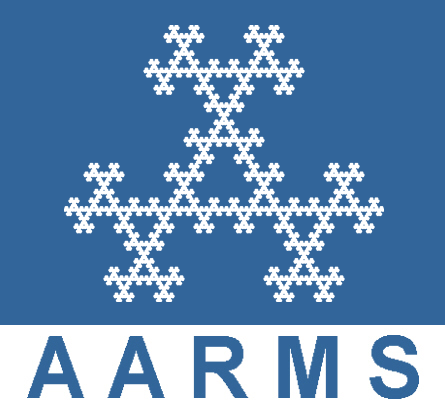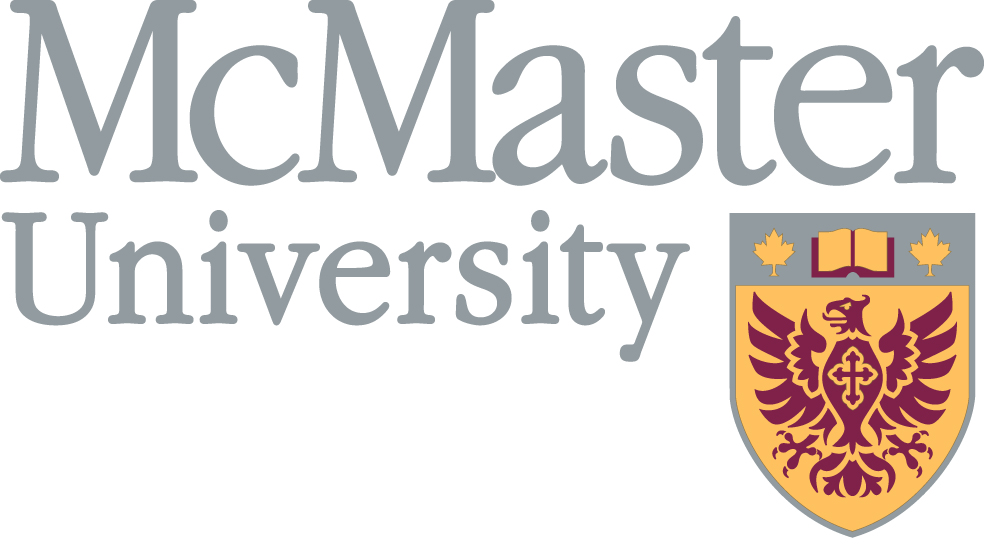Réunion d'hiver SMC 2016
Niagara Falls, 2 - 5 décembre 2016
Équations d'évolution non linéaires
Org: Almut Burchard (University of Toronto) et Marina Chugunova (Claremont Graduate University)
[PDF]
Org: Almut Burchard (University of Toronto) et Marina Chugunova (Claremont Graduate University)
[PDF]
- STANLEY ALAMA, McMaster University
Bistable transition layers with Hamiltonian Dynamics [PDF]
-
Transition layer solutions are well studied within the context of bistable reaction-diffusion equations and systems, such as the Allen-Cahn model. In this talk I will discuss the existence and stability of stationary and traveling layer solutions under Schr\"odinger dynamics. I will present two different contexts: first, a system of coupled Gross-Pitaevskii equations admitting orbitally stable stationary domain wall solutions. Second, traveling wave solutions for a Hamiltonian system in the plane which in addition solve an isoperimetric problem for a degenerate metric defined by the bistable potential.
- PIETRO-LUCIANO BUONO, University of Ontario Institute of Technology
Bifurcations and dynamics of a O(2) symmetric hyperbolic PDE model for animal aggregation [PDF]
-
I will be presenting recent results concerning a 1D hyperbolic PDE model for animal aggregations developed by R. Eftimie (Dundee, UK). This PDE model with periodic boundary conditions is O(2) symmetric where the group O(2) is generated by translations and a reflection. The focus of the talk will be on discussing the emergence of spatio-temporal patterns near steady-state/Hopf and Hopf/Hopf codimension two bifurcation points at a homogeneous equilibrium with full symmetry. I will also be showing how some more exotic patterns can be associated with invariant sets in phase space. Finally, I will briefly explain theoretical results on the applicability of Lyapunov-Schmidt reduction and the Centre Manifold Theorem. This is joint work with R. Eftimie (Dundee, UK).
- GERDA DE VRIES, University of Alberta
A Model of Microtubule Organization in the Presence of Motor Proteins [PDF]
-
Microtubules and motor proteins interact in vivo and in vitro to form higher-order structures such as bundles, asters, and vortices. In vivo, the organization of microtubules is connected directly to cellular processes such as cell division, motility, and polarization. To address questions surrounding the mechanism underlying microtubule organization, we have developed a system of integro-partial differential equations that describes the interactions between microtubules and motor proteins. Our model takes into account motor protein speed, processivity, density, and directionality, as well as microtubule treadmilling and re-organization due to interactions with motors. Our model is able to provide a quantitative and qualitative description of microtubule patterning. Simulations results show that plus-end directed motor proteins form vortex patterns at low motor density, while minus-end directed motor proteins form aster patterns at similar densities. Also, a mixture of motor proteins with opposite directionality can organize microtubules into anti-parallel bundles such as are observed in spindle formation.
- MOHAMMAD EL SMAILY, University of New Brunswick
Homogenization and influence of fragmentation on reaction-diffusion fronts [PDF]
-
We consider a semi-linear parabolic PDE with diffusion and reaction terms depending on the spatial variable. For each $L>0$, the model admits traveling-front solutions and a minimal speed of propagation $c^{*}_L$. We determine the homogenization limit of the minimal speeds as the period $L\rightarrow 0$. Moreover, in the case of an environment composed of “habitat” and “non-habitat” patches, we show that habitat fragmentation decreases the speed of propagation.
- BAASANSUREN JADAMBA, Rochester Institute of Technology
Minimization of a principal eigenvalue in a mixed dispersal model [PDF]
-
In this work, we study a mixed dispersal model of population dynamics and its corresponding linear eigenvalue problem. The model describes evolution of a population which disperses both locally and nonlocally. We investigate the minimization of the positive principal eigenvalue under the constraint that the resource function is bounded from above and below, and with a fixed total integral. The minimization problem is motivated by determination of optimal spatial arrangement of favorable and unfavorable regions for the species to die out more slowly or survive more easily. Numerical results are presented to show various scenarios. This is a joint work with Marina Chugunova, Chiu-Yen Kao, Christine Klymko, Evelyn Thomas and Bingyu Zhao.
- ROBERT L JERRARD, University of Toronto
Concentrated vorticity in the Gross-Pitaevskii equations [PDF]
-
We study the motion of thin, nearly parallel vortex filaments in 3d solutions of the Gross-Pitaevskii equations. In particular, we show that in a certain scaling limit, these filaments are governed by a system of nonlinear Schroedinger equations formally derived by Klein, Majda, and Damodaran in the mid '90s in the context of the Euler equations. This is the first rigorous justification of the Klein-Majda-Damodaran model in any setting. This is joint work with Didier Smets.
- DI KANG, Claremont Graduate University
Thin liquid film coating on a sphere. [PDF]
-
We study the time evolution of a thin liquid film coating the outer surface of a sphere in the presence of gravity, rotation, surface tension and thermal effects. We derive the fourth-order nonlinear partial differential equation that models the thin film dynamics, including Marangoni terms arising from the dependence of surface tension on an externally imposed temperature field. For constant surface tension, we show that the steady states are of three different types: uniformly positive film thickness, or states with one or two dry zones on the sphere, depending on the strength of the centrifugal force relative to gravity. We also give a constructive proof for the existence of non-negative weak solutions in a suitable weighted Sobolev space. In the absence of rotation, but with an externally imposed temperature field, we consider two different heating regimes with axial or radial thermal gradients and discuss the resulting dynamics of the film in both cases. We also analyze the stability of an initially uniform coating under small perturbations and carry out numerical simulations in COMSOL for a range of parameter values.
- THEODORE KOLOKOLNIKOV, Dalhousie
A PDE model of aggregation formation in bacterial colonies [PDF]
-
We study pattern formation in a model of cyanobacteria motion
recently proposed by Galante, Wisen Bhaya and Levy. By taking a continuum
limit of their model, we derive a novel fourth-order nonlinear parabolic
PDE. Using this PDE, we derive the instability thresholds for the onset of
pattern formation. We then compute analytically the spatial profiles of the
steady state aggregation density. These profiles are shown to be of the form
$\mbox{sech}^{p}$ where the exponent p is related to the switching rates and other
parameters of the model. Full numerical simulations give a favorable
comparison between the continuum and the underlying discrete system, and
show that the aggregation profiles are stable above the critical
threshold.
- GREG LEWIS, UOIT
Matrix-free continuation methods for electroconvection [PDF]
-
We investigate the flow transitions in sheared annular electroconvection using matrix-free numerical bifurcation methods. In particular, we study a model that simulates the flow of a liquid crystal film in the Smectic A phase suspended between two annular electrodes, and subjected to an electric potential difference and a radial shear. Due to the Smectic A nature of the liquid crystal, the fluid can be considered two-dimensional and is modelled using the 2-D incompressible Navier-Stokes equations coupled with an equation for charge continuity. The matrix-free method is implemented to identify the transitions of the flow that result due to changes in the Rayleigh number. The primary transition from axisymmetric flow to rotating waves, and the secondary transition from rotating waves to amplitude vacillation are investigated. This is joint work with Jamil Jabbour of UOIT, and Mary Pugh and Stephen Morris of the University of Toronto.
- TETSU MIZUMACHI, Hiroshima University
Asymptotic linear stability of line solitary waves of the Benney-Luke equation [PDF]
-
In this talk, I will consider linear stability of line solitary waves of the two-dimensional Benney-Luke equation which is an isotropic long wave model of three dimensional water waves.
If the surface tension is weak, then small line solitary waves are spectrally stable in a weighted space whose weight function grows exponentially in the direction of the motion of the line solitary wave. Thanks to the transversal effect, there appears a curve of continuous eigenvalues that touches $0$ and locates in a stable half plane and all the rest of the spectrum of the linearized operator is apart from the imaginary axis as is the case with the KP-II equation.
- MARY PUGH, Mathematics, University of Toronto
A Variable Step Size Implicit-Explicit Scheme for the Solution of the Poisson-Nernst-Planck Equations [PDF]
-
The Poisson-Nernst-Planck equations with generalized Frumkin-Butler-Volmer boundary conditions (PNP-gFBV) are equations which describe ion transport with Faradaic reactions and have applications in a wide variety of fields. In this talk, we develop a variable step size implicit-explicit time stepping scheme for the solution of the PNP-gFBV equations. We test our chosen numerical scheme on a simplified ``toy" version of the PNP-gFBV equations, with special care paid to how we extrapolate the coupled nonlinear terms in the boundary condition. We evaluate various ways of incorporating the boundary condition into the scheme, and a method based on ghost points is chosen for its favorable numerical properties compared to the alternatives. We also observe a thresholding in the time step values, which we found to occur when we temporally extrapolate terms in the boundary condition. With the method we develop, we are able to run simulations with a large range of parameters, including any value of the length scale parameter $\epsilon$. This is joint work with Dave Yan and Francis Dawson (both from Electrical and Computer Engineering, University of Toronto).
- IHSAN A. TOPALOGLU, Virginia Commonwealth University
Droplet phase in a nonlocal isoperimetric problem under confinement [PDF]
-
In this talk I will consider the small volume-fraction asymptotic limit of a nonlocal isoperimetric functional with a confinement term. This functional is derived as the sharp interface limit of a variational model for self-assembly of diblock copolymers under confinement by nanoparticle inclusion. By considering confinement densities which are spatially variable and attain a nondegenerate maximum, I will present a two-stage asymptotic analysis in the sense of $\Gamma$-convergence wherein a separation of length scales is captured due to the competition between the nonlocal repulsive and confining attractive effects in the energy. The results will also relate to existence and non-existence of minimizers of a recently well-studied nonlocal isoperimetric functional which appears in the liquid drop model. This is a joint work with S. Alama, L. Bronsard, R. Choksi.
- TYLER WILSON, Fields Institute
Stabilization, Extension and Unification of the Lattice Boltzmann Method Using Information Theory [PDF]
-
The Lattice Boltzmann Method (LBM) is an increasingly popular method for simulating fluids, particularly in complex geometries. However, it is well known to suffer from numerical instabilities in certain flow regimes. In this talk I will discuss how one can use Information Theory to improve the stability of the LBM while uniting two alternative stabilization approaches. Finally I will discuss how this viewpoint suggests interesting avenues for expanding the use cases for the LBM.





